‘The Usual Suspects’ is a film of utmost style. We all know its ending is still discussed to this day. Over the years, the film has attained an almost cult status in the modern cine-audience as a must watch movie. Scores of blogs and critics have lined up giving their two cents on the movie. But before discussing the film I would like to share my perspective on the background to the movie.
The movie is a gem from the 90s. It was perhaps the most fruitful decade in cinematic history in terms of giving a new direction to the depiction of film. The 60s, 70s and the 80s featured many cult films but these decades were seemingly full with movies that were either some franchises (Star wars, Indiana Jones), or were formulaic in their selection of plot and cast, or had an indelible mark of their filmmakers on them (‘Scorsese-esque’, ‘Kubrick-ish, ‘Hitchcock-ian’, ‘Spielberg-ish’, ‘Copolla-ed’). 90s was a decade that marked the highest point for executing remarkably artistic movies by Indie filmmakers in terms of narration, plot treatment and visual elements.
Perhaps, a decay in the vision for the art of film-making had begun to set in since all the major filmmakers who had excelled in the 60s, 70s and the 80s had stagnated, saving a few places where they managed to come out with something new. It was a decade of ‘Indie’ films that was marred with filmmakers who had small-timed in the previous decade or so and had a fresh new perspective to everything: mystery, drama, crime. It would be a cruelly unfair if I were to say that the veterans didn’t have anything to contribute. They did. Stanley Kubrick made ‘Eyes Wide Shut’, Martin Scorsese made ‘Casino’, Steven Spielberg had an exceptional showing: ‘Schindler’s List’, ‘Saving Private Ryan’, ‘Jurassic Park’. But the decade saw a new breed of filmmakers: Michael Mann made ‘Heat’ and ‘The Insider’, David Fincher made ‘Seven’ and ‘Fight Club’, Quentin Tarantino made ‘Reservoir Dogs’ and ‘Pulp Fiction’, Danny Boyle made ‘Trainspotting’ and Bryan Singer made ‘The Usual Suspects’.
The Plot
At its core, ‘The Usual Suspects’ is about ambiguity and speculation. These two elements make the movie different from any neo-noir flick or suspense drama. There is one question that forms the core of the movie ‘Who is Keyser Söze ?’ The movie centres around five criminals Deane Keaton (Gabriel Byrne), Verbal Kint (Kevin Spacey), Michael McManaus (Stephen Baldwin), Fred Fenster (Benicio del Toro) and Todd Hockney (Kevin Pollak). They end up in a police line-up apparently on a trumped up hijacking charge and decide to pull off a heist to get even with the police. This leads to another heist which goes bad and they end up working for a semi-mythical crime boss who goes by the name Keyser Söze, via his attorney Kobayashi (Pete Postlethwaite).

The film’s story is told through flashbacks as customs agent Dave Kujan (Chazz Palminteri) and police sergeant Jeff Rabin (Dan Hedaya) interrogate the only surviving member of the lineup, Verbal Kint, a cripple suffering from cerebral palsy. Kint narrates the events that happened after the lineup that finally led them to take out dope worth 91 million dollars from a boat of Argentinian dealers. The movie reaches a supposed climax when Agent Kujan manipulates Kint into believing that Dean Keaton was Keyser Söze . Emotionally devastated, Kint leaves the place and Agent Kujan thinks that perhaps he has solved the case.
Then with a master stroke the movie pulls a twist: Kujan looks around his office and discovers that the major details of Verbal’s confession were lifted from flyers and notes on the bulletin board as well as other objects around the room. Meanwhile, Kint walks out of the police station and starts walking, limping as usual. A few seconds later he looses his limp, flexes his supposedly paralyzed fingers, and slips into a getaway car driven by Kobayashi. The last shot cuts back to an earlier scene of Kint explaining Keyser Soze’s legend to Kujan: Kint blows on his fingers and says, “And like that, he’s gone.”
The Ending
The movie’s thrust lies in the fact that it relies on the flashbacks of Verbal Kint. As revealed in the end, it turns out that Kint is faking his disability and hence we find ourselves digging through a plot that relies on an unreliable narrator. For example, in the beginning of the movie Kint tells Agent Kujan that the idea of pulling the heists post their lineup was his own. But in the final moments Kujan is able to extract the fact from Kint that the person behind all their acts was Deaton indeed.
And that puts the whole plot into a messy situation. Because it makes the audience unlearn everything that it learnt watching the whole movie except the final ‘revealing’ moments.
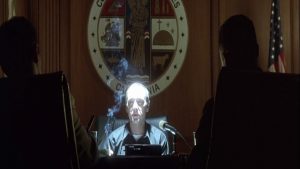
And this is where the problem starts. To unlearn everything and rely on the final moments leaves the audience stunned and dazzled but at the same time in a state of confusion and disbelief. It is then we start re-constructing the ‘actual plot’. The ‘actual plot’ in our case cannot be a definitive one but it would be based on exclusion.
Anything and everything that could not be verified by the police could be, and is possibly, made up by Verbal Kint.
For example, the group’s lineup was something that definitely happened since it could be easily verified by the police. The criminal record of Kint was also genuine since it was verifiable. However, their dealings with Redfoot and Kobayashi and their motives behind raiding the boat are certainly dubious.
There are several elements in the movie that help it lead the viewer astray. For example, the choice for playing Kint was Kevin Spacey, who was relatively a less popular actor than he is today. Had any acclaimed or highly popular actor been chosen, the audiences could have easily sensed something amiss: The ‘I told you so’ moment.
The another element is the myth like status of Keyser Söze. No one has actually seen him. The audience gets a glimpse of him only twice in the movie.
The first glimpse is in the introduction of the movie when he appears in a black overcoat, with his face unrevealed by the camera. He kills Deaton and sets the boat on fire. To confuse the audiences further, for the scene in which Keyser Söze kills Keaton, Singer asked Byrne to put on the costume and shoot the gun. Byrne recalls in a featurette for the 2002 special edition DVD, “Singer said, ‘I want you to put on the hat, and the coat, and the gun, and I want you to shoot him,’” “I said, but ‘him’ is me! He said, ‘I know him is you. But I want you to shoot you.’… He said, ‘It’s important that the audience for that moment thinks that that character with the gun and the hat is you. And if you really look closely, and you stop it, it is me.”

The second glimpse is a blurred image of him after he kills his enemies and their families. Kint rightly describes him as “a spook story that criminals tell their kids at night: Rat on your pop, and Keyer Söze will get you.”

This myth like existence gives him an element of being elusive and dangerous at the same time. He existed and maybe he didn’t. Even if he were to exist no one knows where he would show up and where he wouldn’t. A viewer who gets to know about Kint in the end and attempts to reconstruct the plot finds himself at loggerheads regarding the existence of Keyser Söze.
Another very important element is that the audience is led to believe many things which are supposedly not true. For example, when Agent Kujan is trying to convince Kint that Deaton was indeed Keyser Söze, an interplay of all their acts with Keaton as the perpetrator is played with their conversation. This visual convinces the audience that indeed Keaton was Keyser Söze. However, in the end, when Kint looses his limp and gets away in his car, a similar flash of events like the earlier interplay is played with Kint as the perpetrator instead of Keaton.
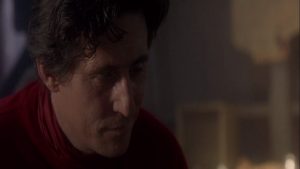
This leads the climax of the movie to give a kind of visual shock to the audience.
Who is Keyser Söze?
The most definitive and ultimate question posed by the movie is regarding the identity of the Keyser Söze. ‘Who is Keyser Söze ?’ Sadly, the answer to this question cannot be arrived at definitively through any evidence just like the larger portion of Kint’s flashback story which seems dubious as to what had actually happened.
The most popular as well as the easiest conclusion that can be drawn is that, perhaps, Verbal Kint is Keyser Söze. He is the only one that survived the boat incident and he has also been telling complete lies about everything that happened after their lineup at the police station. His disability is fake. Also, while getting out, he receives the gold lighter and watch which, apparently, are Keyser Söze’s belongings as revealed in the first scenes of the movie. Also the sketch made on the basis of the burnt Hungarian’s description of Keyser Söze matches Kint’s face.
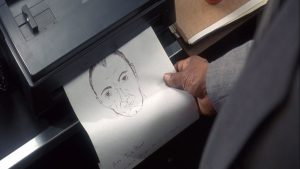
But this is just speculation at best: picking up whatever hints are available and assuming the easiest story possible. Circumstantially, all that can be proved is that Kint has lied about his identity and the events around the boat incident. Nothing else can be conclusively proved. Maybe Kint is a lieutenant of Keyser Söze and the watch and lighter are a present from him. Maybe Kint is using the myth of Keyser Söze to buy some time so that he can post bail and get away. The Hungarian’s sketch cannot be trusted. He was there on the boat and could have easily mistaken Kint for Keyser Söze. Maybe it was staged. The only man who could identify him was dead, for all we know.
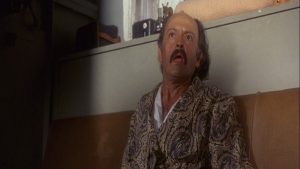
A next possibility is that Kobayashi was Keyser Söze. Verbal looks too young to have been married with children and then lived for several years underground. Kobayashi could reasonably have been Keyser Söze. He is clearly in his late 50s or early 60s, making a large span for him to have murdered the families of his enemies and then subsequently having climbed the steps to become a dreaded a crime boss. Also, Kobayashi has well imbibed the American culture and is fearless enough to threaten Kint and his companions with murdering their loved ones when they try to disobey him. Also, his position is too precious to be given away to the policemen while trying to make up a story in front of the detectives. Keyser Söze is known to work indirectly and there is less chance that he would have risked getting caught by Police.
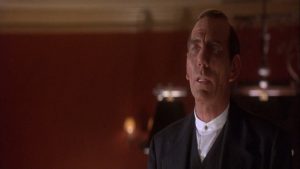
Keyser Söze could be Keaton too since all the time he was the planner of everything and had asked Kint to stay behind. He had been a cop before and he knew how to trick them and maybe Kint was working for him to lead the police astray. It was he who was the most frustrated with the lineup and felt that the police would never stop chasing him. Being proclaimed dead could have easily got him the immunity he needed and like Kint mentions that it is unlikely that the police would ever hear from Keyser Söze again.

Anyone could be Keyser Söze. Kevin Spacey claims that every actor on the movie set believed himself to be Keyser Söze, and has repeatedly told a story about Gabriel Byrne flying into a rage when he screened the film and realized it wasn’t him. However, Byrne and Singer have never confirmed this and in fact, Byrne said on the 2002 DVD featurette that his job on The Usual Suspects was “to really take attention off Spacey.” At the same time, Byrne has remained open to alternate theories of Keyser Söze. “Is it Spacey? Probably is, I love the idea that it might not be.”
Final Word
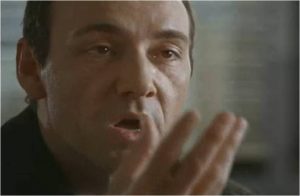
Perhaps the fact that the true identity of Keyser Söze cannot be arrived at is the best part of the movie. Having taken heavily from the mysteries of the previous decades, the movie builds on an unreliable flashback and leaves the audiences wondering and debating the identity of Keyser Söze for more than two decades now. It remains a stand-alone movie without getting extended into a mainstream genre save a few rip-offs. The style of the movie stays intact and its dreamy elusiveness still captures the viewer’s mind. “The greatest trick the Devil ever pulled was convincing the world he didn’t exist”.
Read More: Arrival Ending, Explained

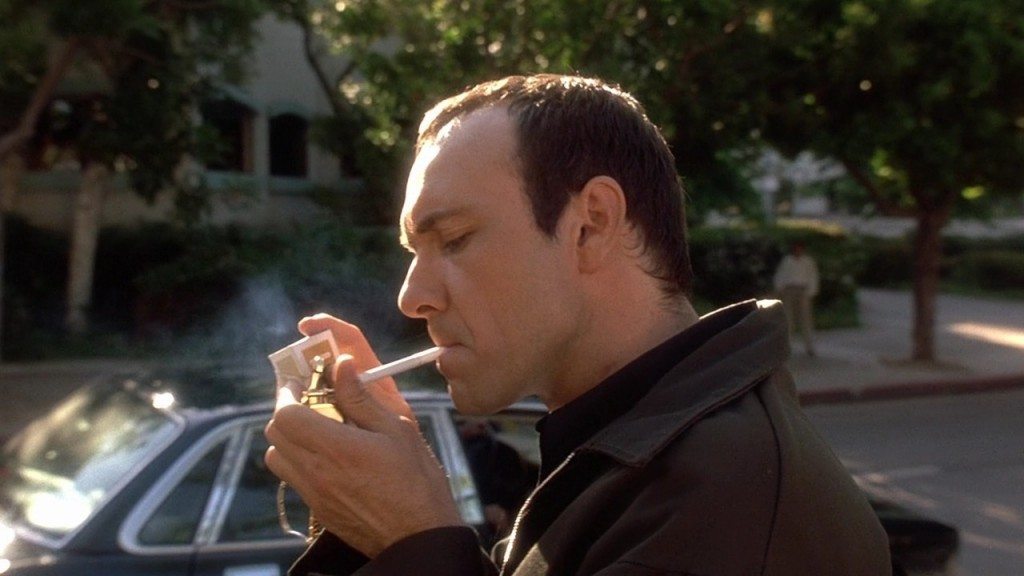
You must be logged in to post a comment.